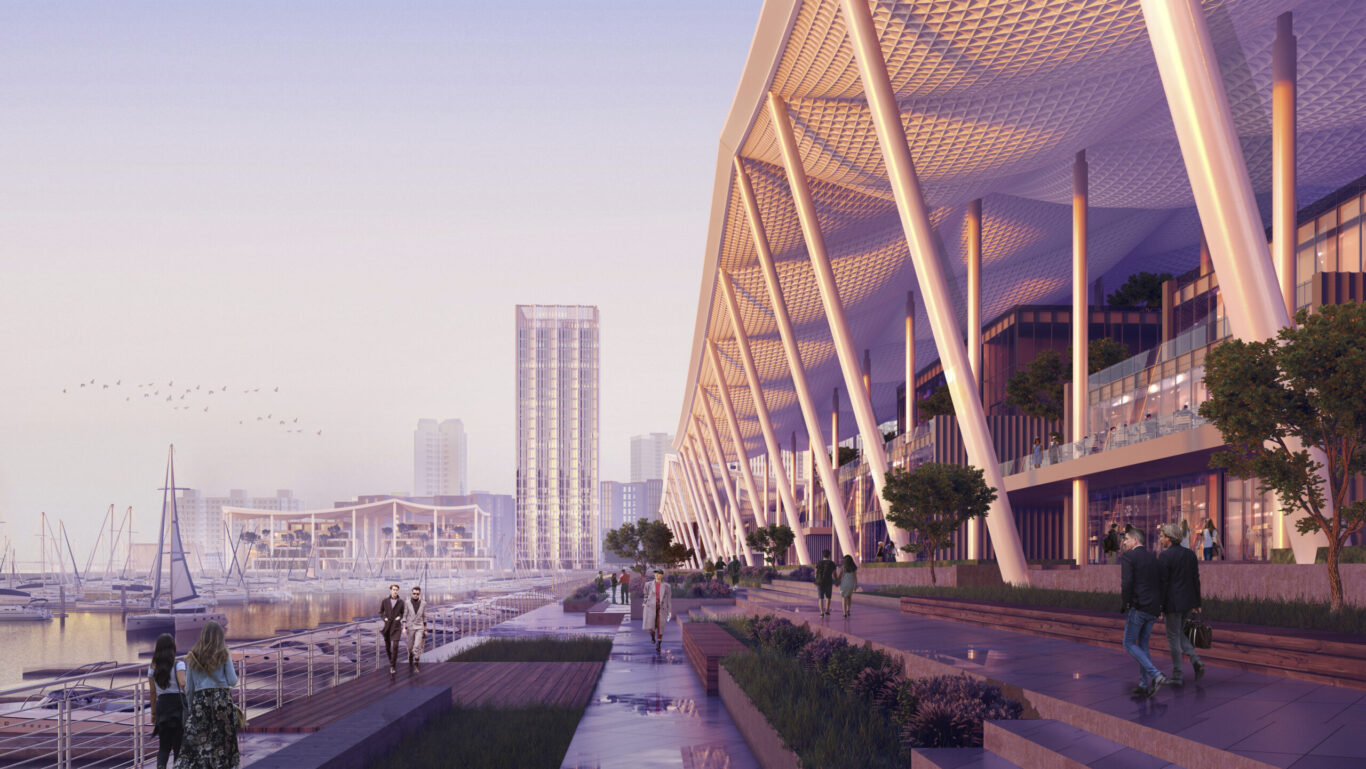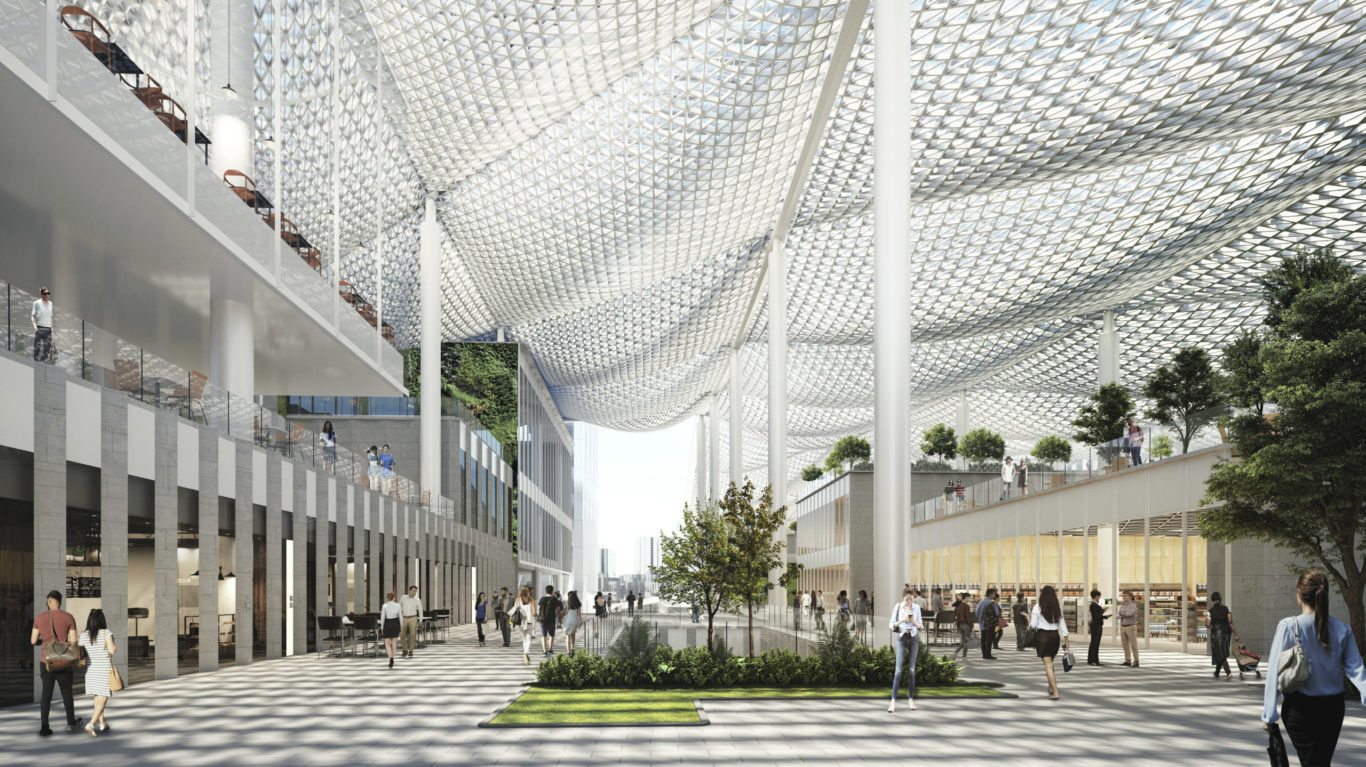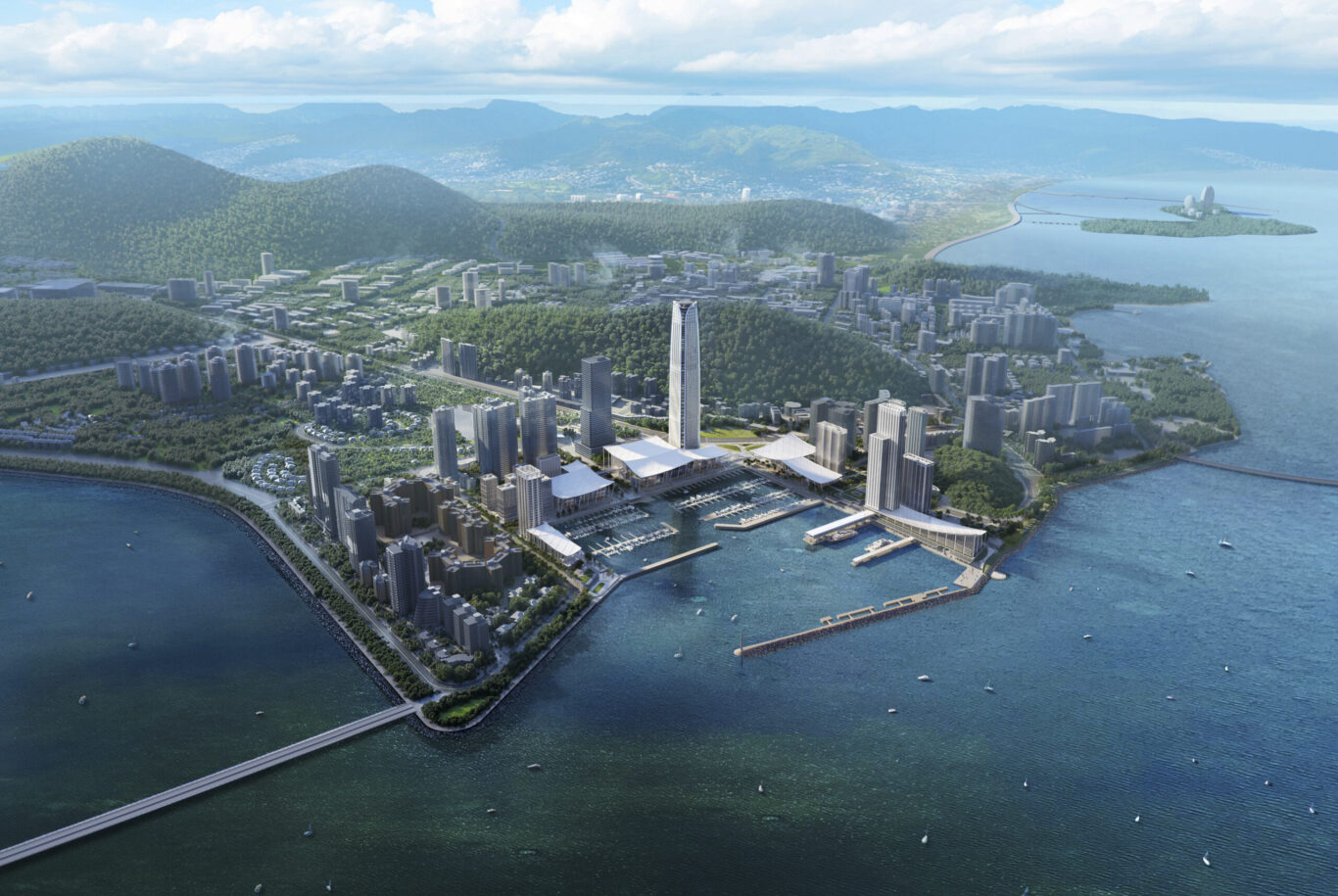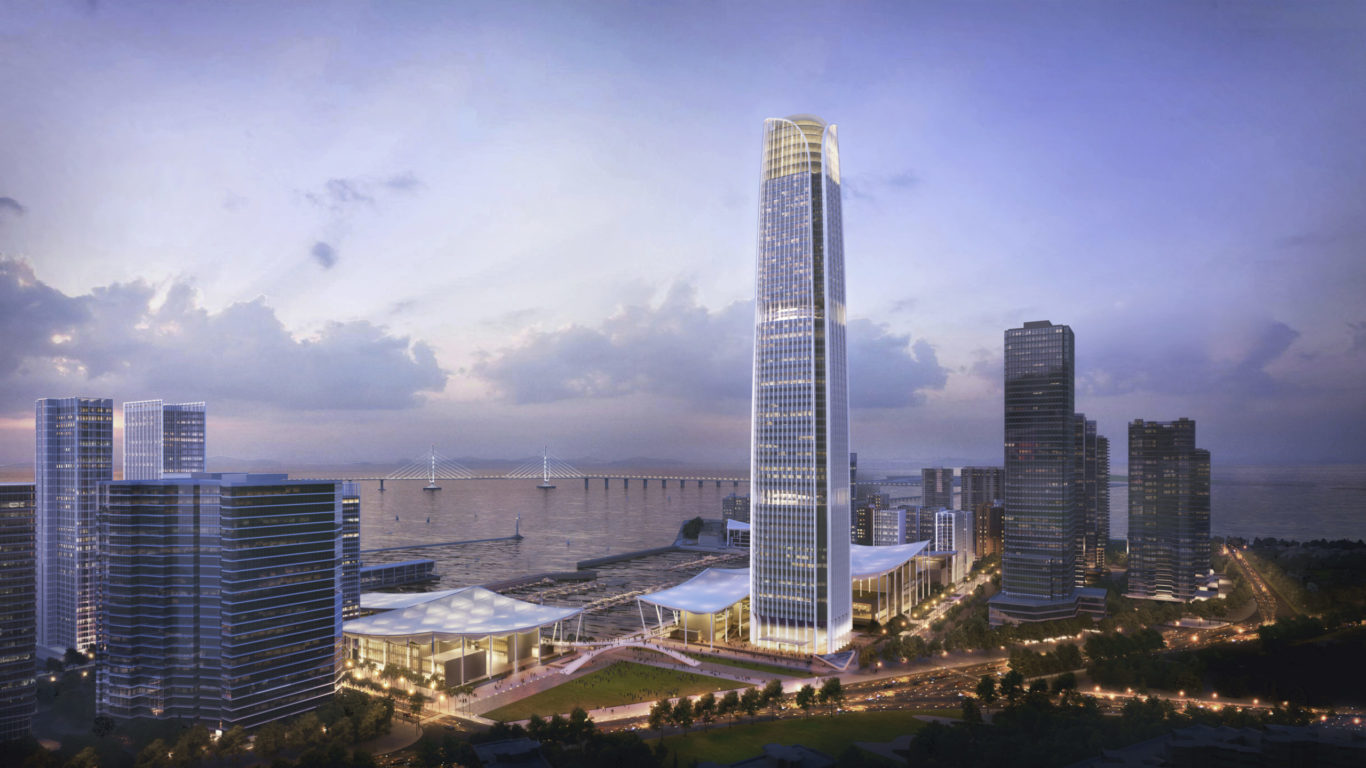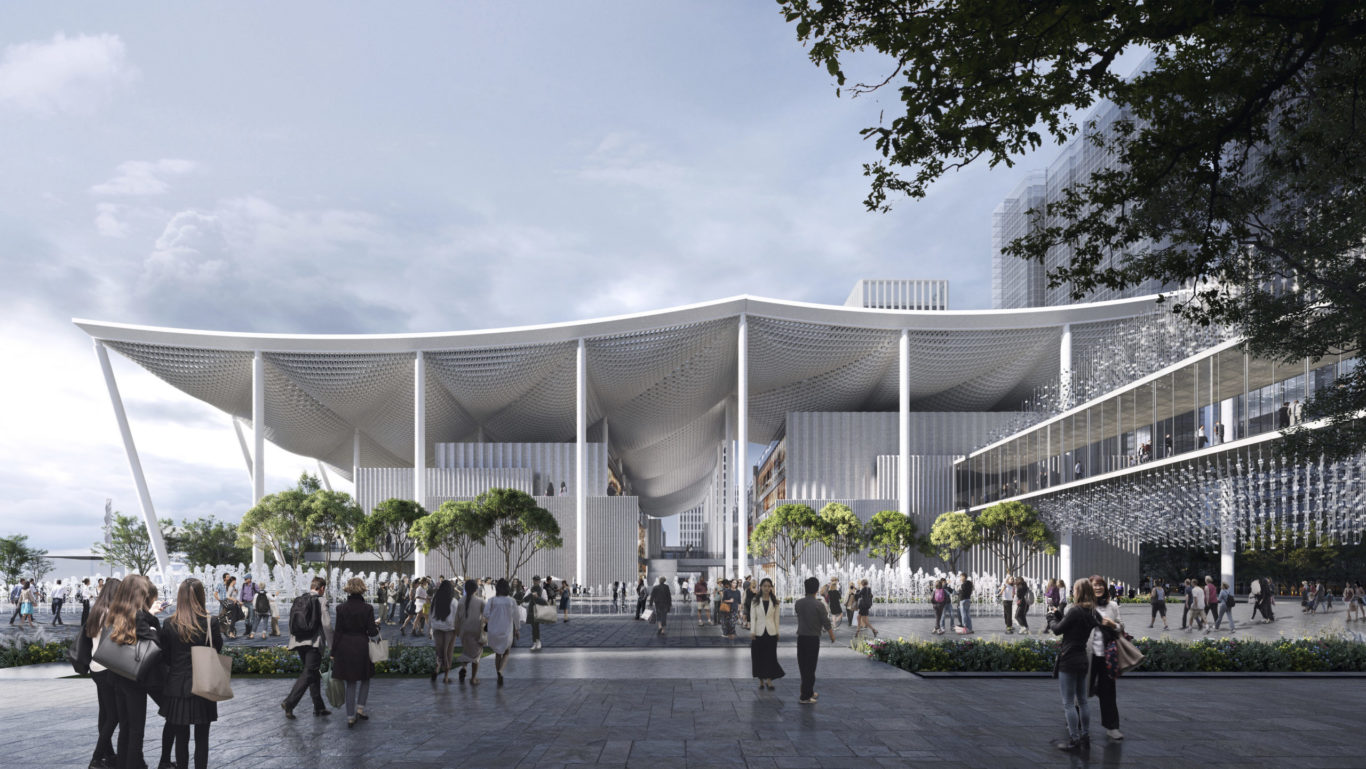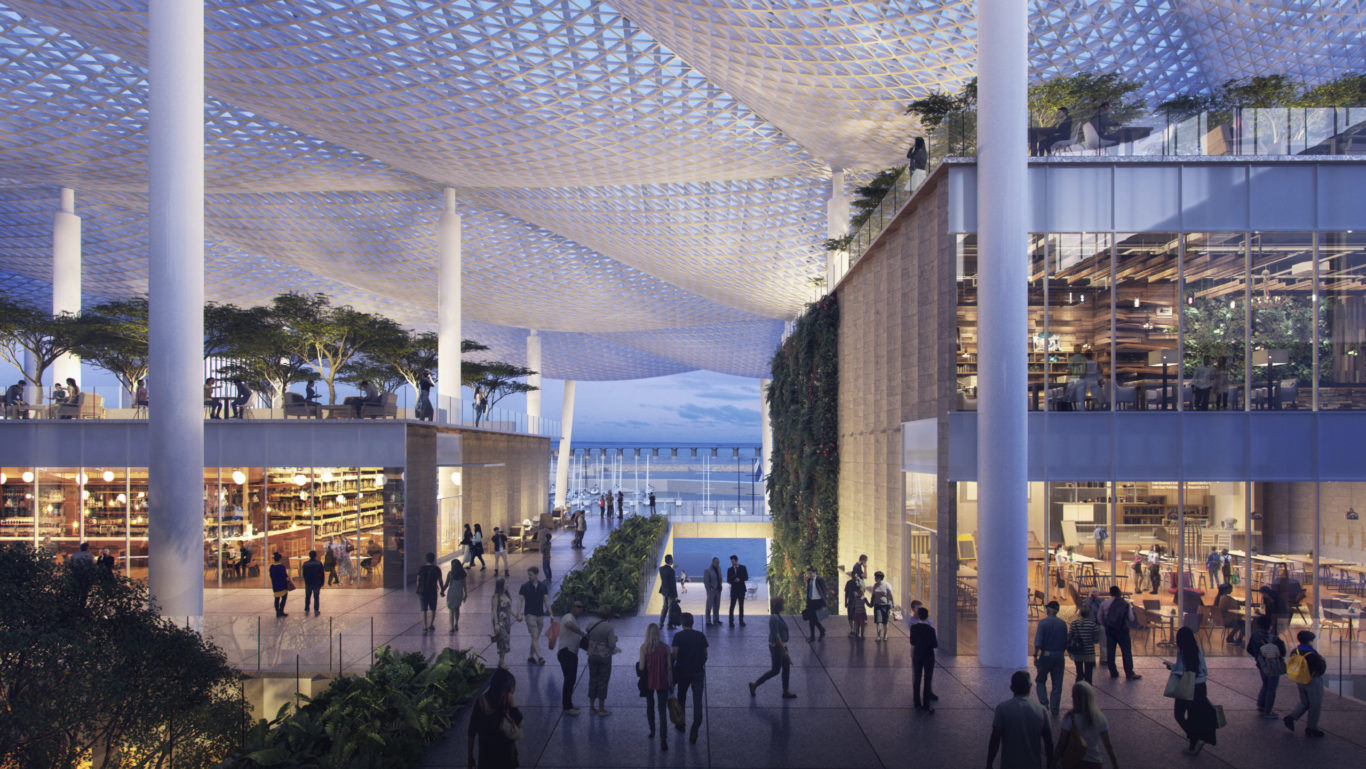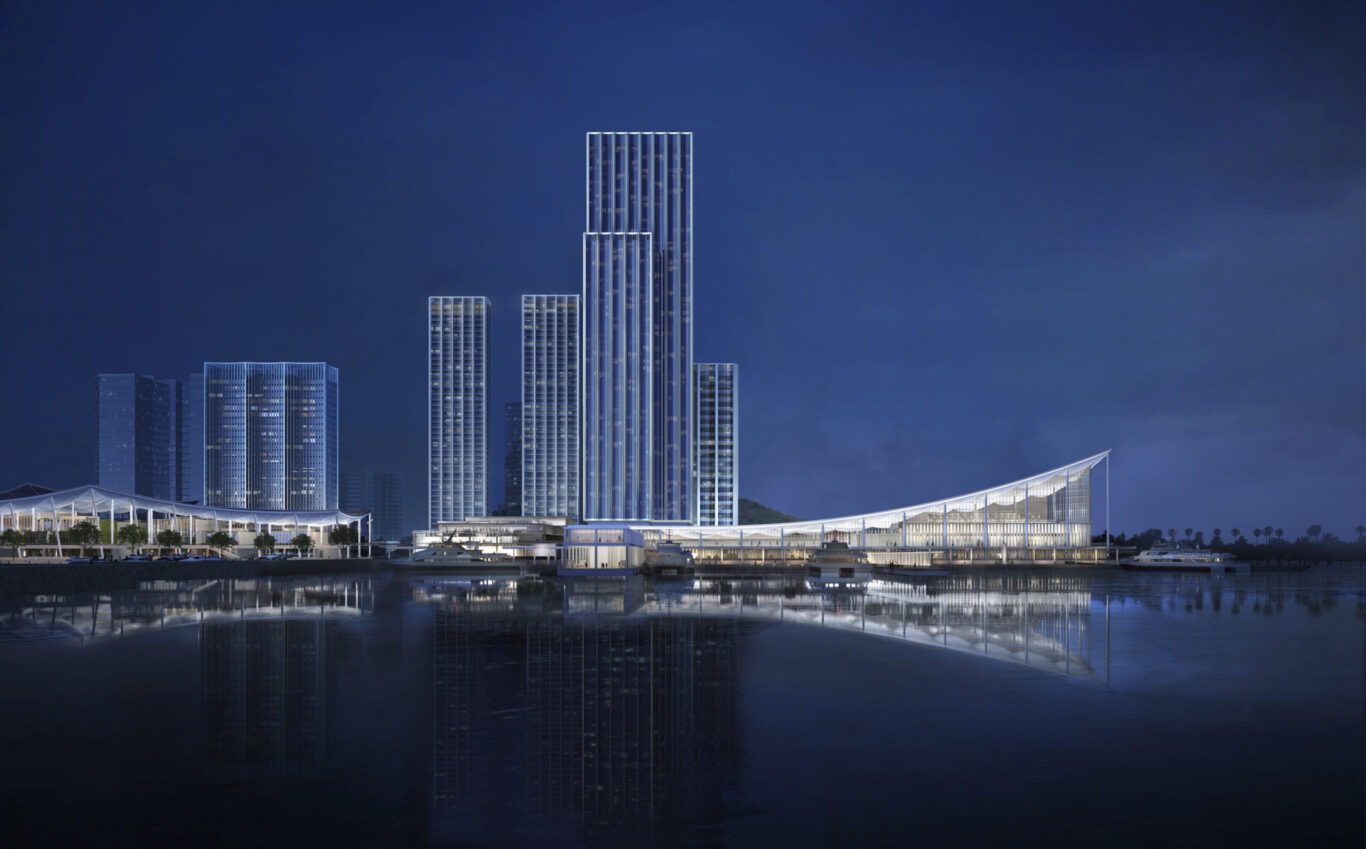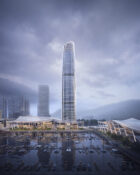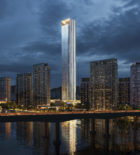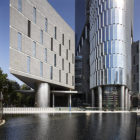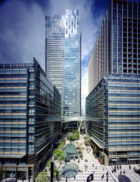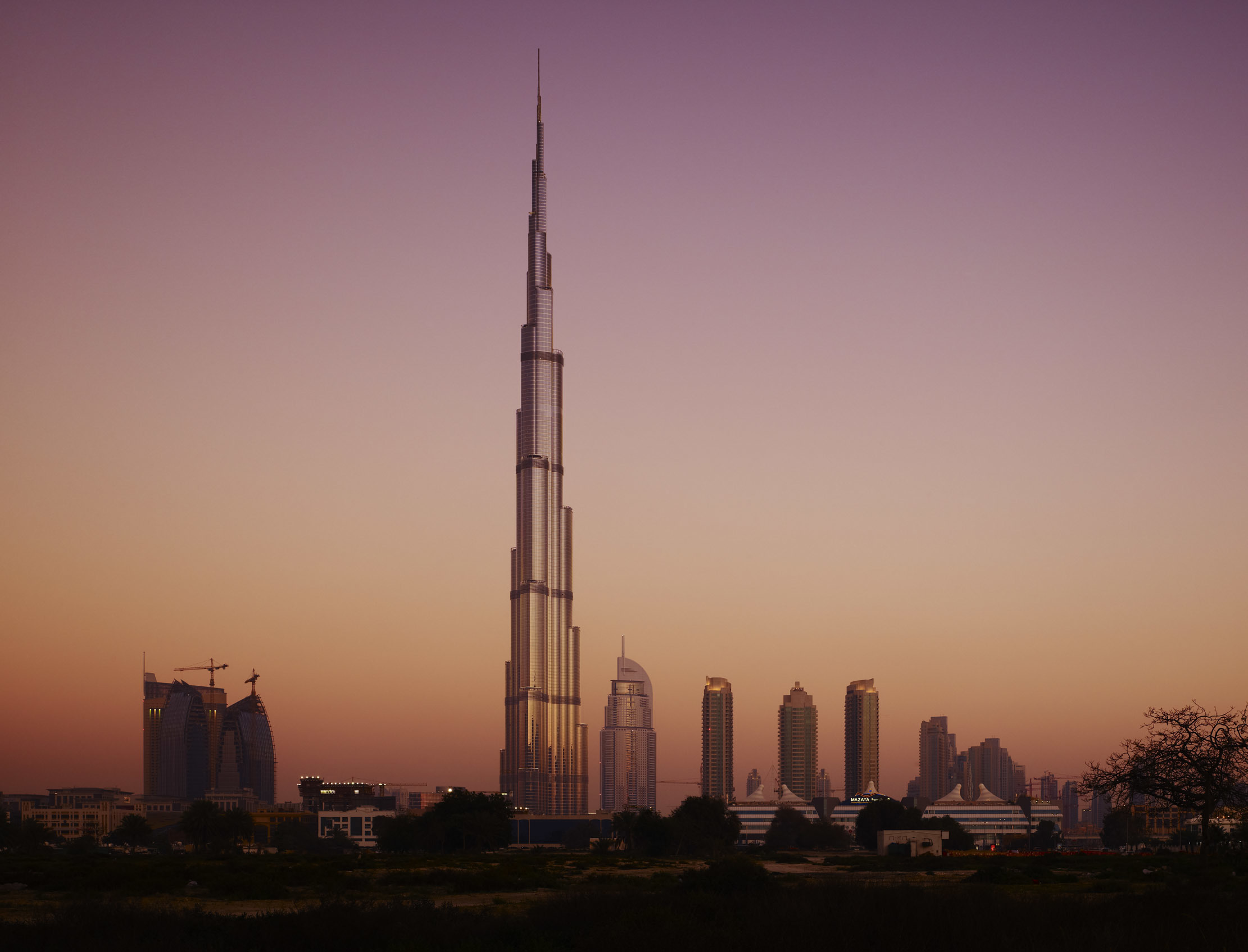SOM’s design for Jiuzhou Bay—a new mixed-use neighborhood located along the Pearl River Delta in Zhuhai, Guangdong Province—will transform the waterfront of the Greater Bay Area’s burgeoning tech hub and create a blueprint for future development in China. The lively, low-carbon community is inspired by the city’s maritime history and features offices, residences, retail, and infrastructure to accommodate many new residents and visitors.

The design sets a new standard for public transit in the region, with plans for a robust transportation hub that offers connections to land, sea, and rail across more than 40 acres. It also features five modular canopies that envelop three sides of a 1.8 million-square-foot port, weaving together a landscape of towers rising behind it and creating a series of covered pedestrian alleyways, a lively retail environment, and interlinked courtyards along the waterfront promenade.
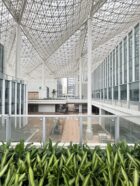

Complementing the site’s maritime heritage is a tower that rises at the heart of the neighborhood, creating a recognizable structure with a design inspired by the form of a lighthouse Fresnel lens. The tower includes 35 floors of office space topped by a 20-story Ritz-Carlton Hotel complete with a skybar and observation deck. The tower is diagonally bisected by an axis that appears to peel open the facade, revealing a vertical atrium that offers visitors breathtaking views of the bay.
The new neighborhood is designed to utilize Zhuhai’s most abundant natural resources—the sea and sun—to reduce natural gas consumption, conserve water, and create a comfortable environment for residents, office workers, shoppers, and nightlife seekers, helping to activate the site both day and night. The canopies also increase interior comfort and building efficiency by filtering daylight, harvesting energy via photovoltaic panels, and capturing rainwater.
